In less than two years, Saga has successfully attracted 350 projects, with 80% of them focusing on the gaming industry.
By Greythorn
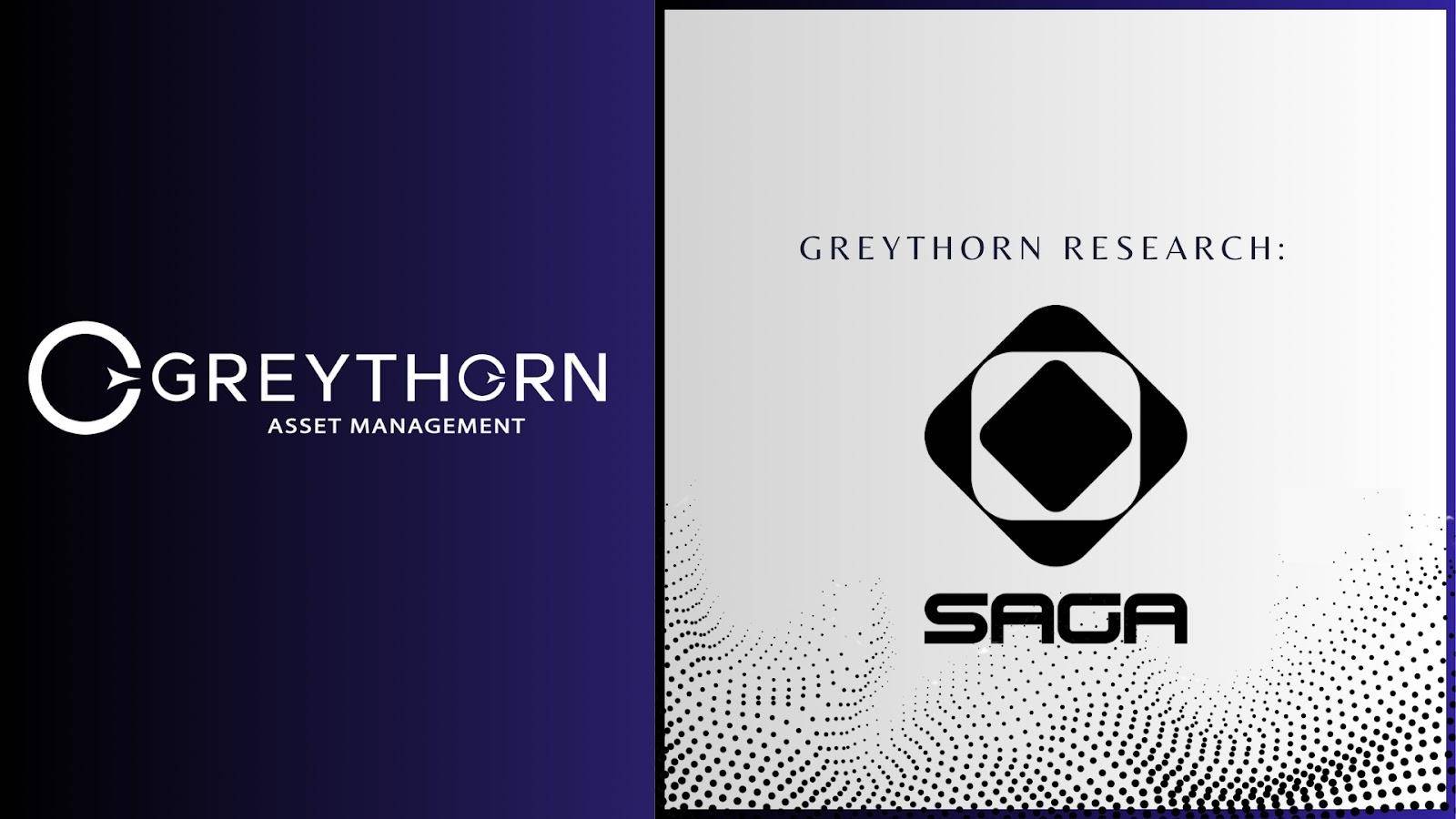
Project Name: Saga
Project Type: L1
Stock Code: $SAGA
Cryptocurrency Ranking: 221
Market Value: $22.5M
Fully Diluted Value (FDV): $3.6B
Circulating Supply: 90M (9%)
Total Supply: 1B
Maximum Supply: ∞
Introduction
Modular blockchain provides a solution to the difficulties of decentralization, security, and scalability in blockchain technology. This innovative approach distributes the fundamental functions of blockchain, such as execution, settlement, data availability, and consensus, to specialized networks. Unlike traditional blockchains that rely on a single network to process all operations, modular blockchains separate these tasks, significantly improving the efficiency of each function.

Source: Binance Research
Modularity is a promising path to improve blockchain scalability, addressing key issues of decentralization and security that many blockchain projects are actively exploring and developing. Since the establishment of Celestia, the modular field has seen the development of various solutions, such as shared sequencers, validation systems, interoperability protocols, order flow abstraction projects, and infrastructure providers like the rollup framework and Rollup-as-a-Service (RaaS).
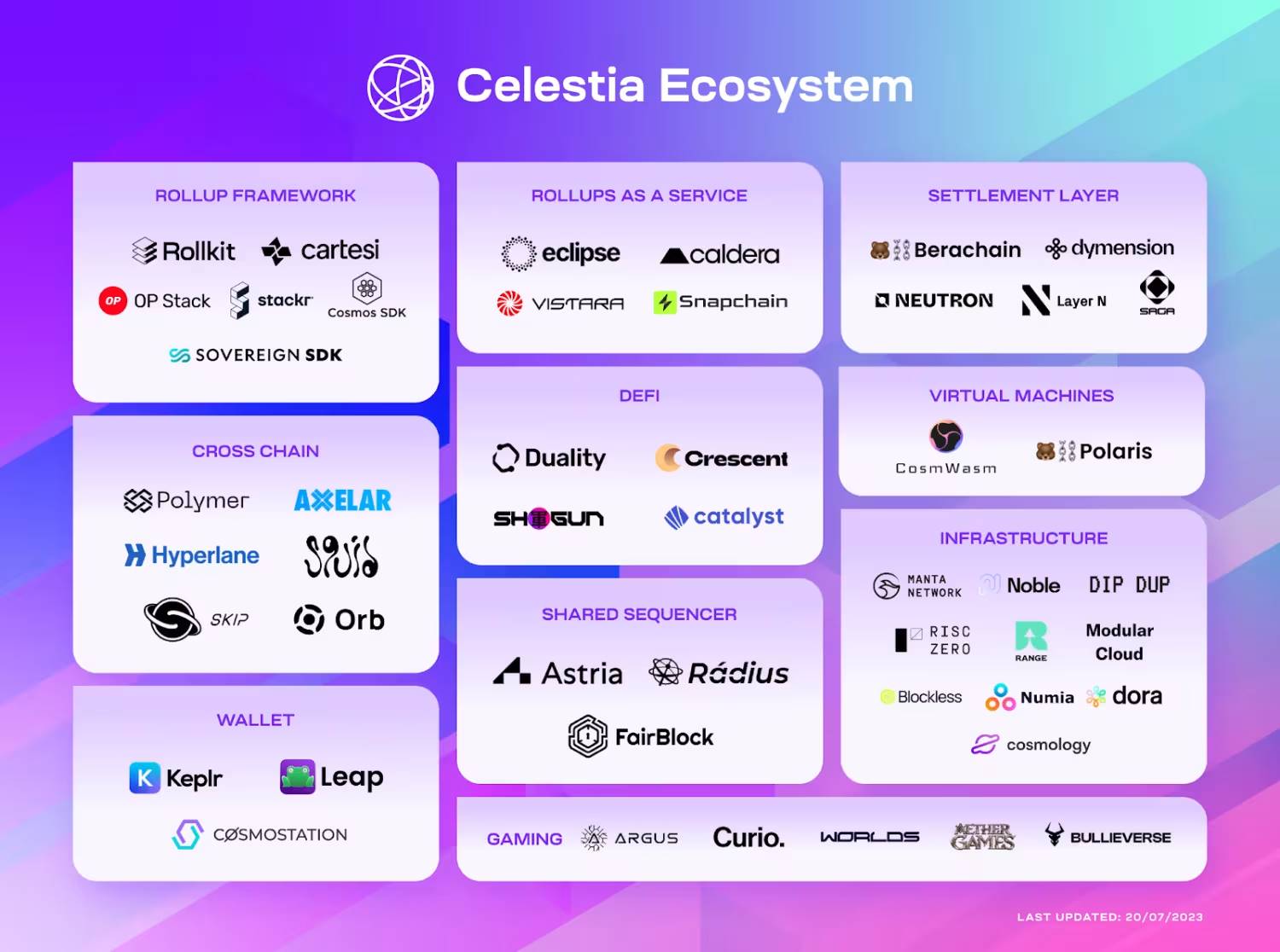
Source: Celestia
One notable project is Saga, a modular Layer1 platform tailored for the gaming industry, which has recently become an innovative participant in the field of cryptocurrency technology.
Saga Overview
Launching a blockchain can be complex as it requires developers to handle various technical aspects of blockchain infrastructure. The Saga protocol simplifies this process by providing Chainlets – specialized blockchains that developers can easily launch like deploying smart contracts. This solution integrates key elements such as data availability, consensus, execution, and settlement to create a seamless product experience. By integrating these components, Saga not only saves time for developers but also reduces the typical complexity of modular systems.
The Saga protocol operates on a fully decentralized proof-of-stake model, ensuring that each Chainlet maintains the same high security standards as the Saga mainnet and uses the same set of validators.
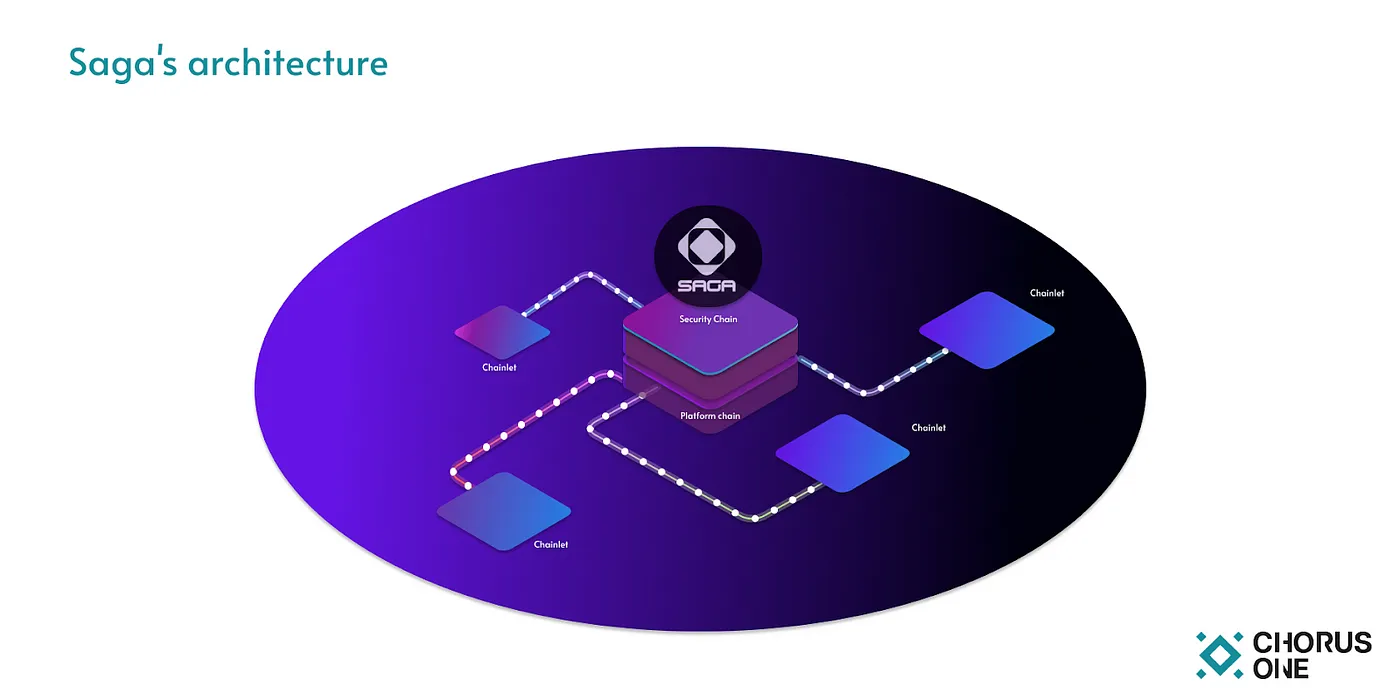
Saga's impact is evident in its rapid growth. In less than two years, it has successfully attracted 350 projects, with 80% focusing on the gaming industry. Strategic collaborations with industry leaders such as Polygon, Avalanche, and Celestia further highlight Saga's ability to effectively expand infrastructure and support a wide range of blockchain applications.
Saga Architecture
Chainlets
The Saga protocol revolutionizes the deployment of blockchains through its product, Chainlets. These are automated, high-performance blockchains within the Saga ecosystem that are interoperable and customizable.
Protected by the Saga blockchain, these Chainlets are verified through a shared security model called "Interchain Security" and enjoy robust protection. This model enables Saga to provide security for its Chainlets, ensuring they have the same level of security and decentralization as Saga itself. Their functionality is similar to Cosmos SDK application chains but without the need to manage their own set of validators.
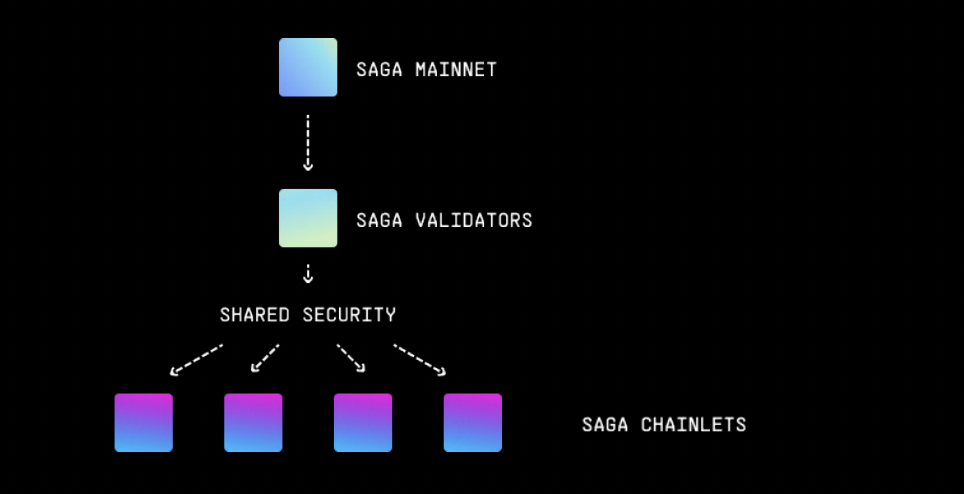
Source: Saga
Chainlets provide developers with a decentralized and secure way to deploy blockchain for specific applications, allowing them to freely choose their preferred virtual machine. This flexibility was highlighted at the Saga Multiverse Summit through the introduction of Saga Realms, enabling developers to launch customizable chains with different characteristics and services on Saga, such as technology stack, security sources, and related obligations. Under the Realms framework, standard Saga Chainlets will become one of the many areas supported in the future, including services for Saga's partners such as Ethereum (Ethlets), Polygon, Avalanche, Celestia, and others.
The process of launching a Chainlet has a unique permissionless nature compared to the replication security mechanism used by the Cosmos Hub. Developers only need to pay for the setup and maintenance of their Chainlet using the $SAGA token, similar to subscribing to services from providers like Amazon Web Services, but with payment in $SAGA tokens.
Security Chain
The security chain is the primary security source of the Saga protocol, using Cosmos-SDK. It is responsible for minting $SAGA tokens, staking, and potential punitive measures against validators' misconduct.
Platform Chain
Platform Chain
The Platform Chain is also built on Cosmos-SDK and serves as the place for developers to launch and manage their Chainlets. It consolidates various security sources, including the Security Chain, and extends security to Chainlets through a process called Cross-Chain Validation (CCV), while reporting any misconduct for potential punitive measures back to the Security Chain.
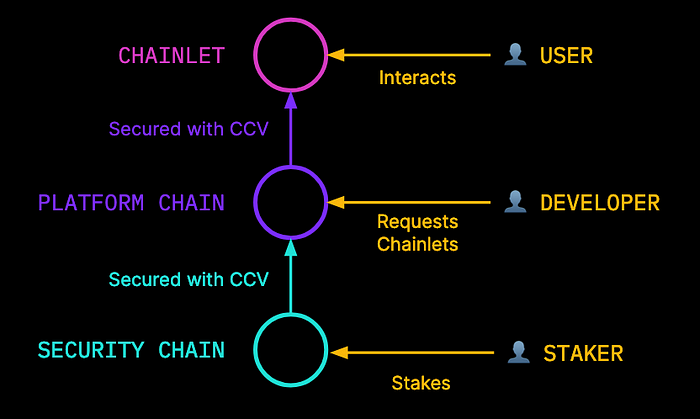
Initially, the Platform Chain will primarily obtain security guarantees from the Saga Security Chain, but there are plans to incorporate additional security sources, including Ethereum, Polygon, Avalanche, and other validators in the future.
Team, Adoption, and Alliances
The Saga team is led by a group of dynamic and experienced co-founders:
- Jin Kwon, Co-founder and Chief Strategy Officer, previously Vice President at Ignite, holds a Master's degree in Computer Science from the University of California, Berkeley.
- Jacob McDorman, Co-founder and Chief Technology Officer, previously co-founded the software consulting company Cellaflora, holds a Bachelor's degree in Mathematics from Purdue University.
- Bogdan Alexandrescu, Technical Expert and Entrepreneur, active in the Bitcoin Foundation and multiple blockchain projects.
- Rebecca Liao, Co-founder and CEO, also co-founder of the global trade blockchain Skuchain. Under her leadership, Skuchain achieved an annual transaction volume of over $5 billion and was recognized as a top blockchain company by the World Trade Organization in 2020.

As of April 26, 2024, the Saga Innovators Program includes 350 projects, with 80% focusing on the gaming sector, 10% on NFTs and entertainment, and the remaining 10% on decentralized finance (DeFi). These projects leverage Saga's technological innovations and expand their blockchain applications.
Saga has collaborated with several leading blockchain protocols to expand using its Chainlets technology:
- XPLA and Com2uS: In November 2022, Saga partnered with XPLA to provide scalable infrastructure for gaming-specific chains.
- Celestia Labs: In January 2023, Saga began implementing sequencers as a service in collaboration with Celestia to scale rollup architectures.
- Polygon: In February 2023, a partnership was formed to automate supernets, facilitating the deployment of app chain solutions.
- Avalanche: In April 2023, Saga automated the instantiation of subnets, enhancing the deployment of app chains.
Saga Origins was launched in March 2024, dedicated to leading Web3 games into the market. The department actively supports game developers at every stage from initial concept to final release. To facilitate success, Saga Origins offers a range of services, including collaboration with influencers to enhance visibility, financial support for user acquisition, and extensive promotional support, to maximize impact and engagement.
Token Economics
The $SAGA token in the Saga protocol serves multiple purposes. It is the currency for developers to pay network validators when launching and maintaining Chainlets. It also rewards users who stake tokens to support network security. Additionally, holding $SAGA grants users voting rights for future network decisions. Initially, ten billion $SAGA tokens will be issued, with approximately 90 million, or 9%, released at the token generation event.
The market value is $22.5 million, with a fully diluted value of $3.6 billion. The current circulating supply of tokens is 90 million, accounting for 9% of the total supply of 1 billion.
Token distribution:

Source: Cryptorank
Token issuance plan:
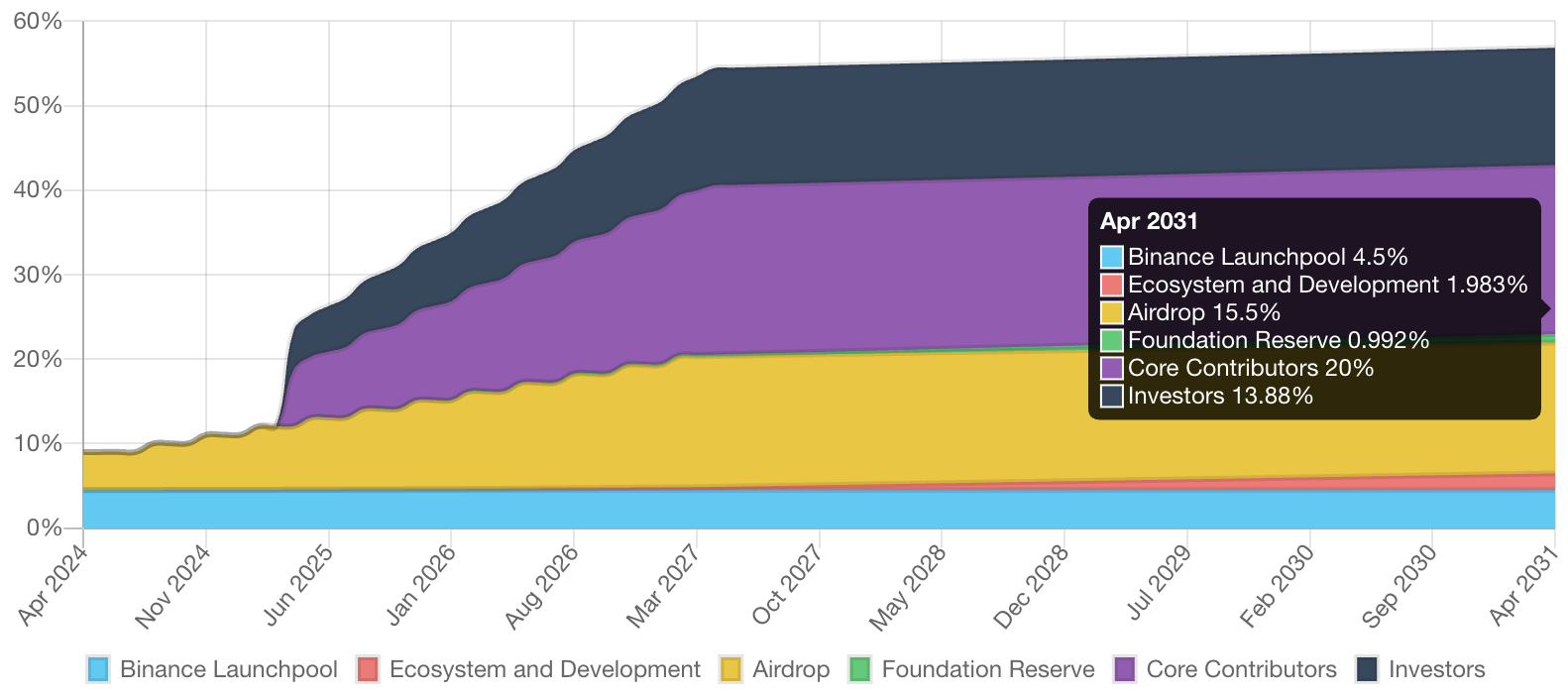
Source: Binance Research
Funding Journey
In October 2021, the company successfully raised $2 million in funding from Ignite. The following year, on May 19, 2022, an additional $6.5 million was raised in a seed funding round, with investors including Hypersphere Ventures, Maven 11 Capital, SamsungNext, Merit Circle, Polygon Studios, and LongHash Ventures. On November 20, 2023, another $5 million was raised in an expanded seed round, led by Placeholder Ventures and supported by LongHash Ventures, Com2uS, Red Beard Ventures, Dispersion Capital, and Tykhe Block Ventures.
In addition to these successful funding rounds, Saga's landmark listing on Binance surpassed all previous launch pool records on the platform, attracting over $13 billion in funds in less than 24 hours.
Positive Fundamental Factors
- Modular Keyness: Modularity is crucial in addressing scalability, decentralization, and security challenges in blockchain technology. As an early adopter of this pattern, Saga stands to benefit greatly once this pattern becomes widely accepted.
- Rise of GameFi Industry: GameFi has become one of the most promising sectors in the digital asset space, and Saga is investing significant resources in this area to ensure its significant position in the industry.
- Strategic Partnerships: Saga has established strategic partnerships with important blockchain entities such as Polygon, Avalanche, and Celestia, strengthening its technological infrastructure and expanding its ecosystem, enhancing its ability to support scalable and efficient blockchain applications.
- Significant Investments: Saga has received significant investments from well-known investors, providing the necessary financial stability to support its ongoing development and expansion. Saga's record-breaking launch on Binance highlights its market reputation and potential for success, garnering widespread community participation and investor confidence.
Negative Fundamental Factors
- Intense Market Competition: The blockchain space, especially the gaming and decentralized finance (DeFi) markets, is highly competitive, with many mature competitors and emerging new entrants. Saga's success depends on its continued innovation and differentiation from other blockchain platforms in improving scalability and efficiency.
- Market Volatility: From an investment perspective, the cryptocurrency market is extremely volatile, sensitive to macroeconomic factors, liquidity cycles, and economic news. Despite the high potential of the technology and Saga, the speculative nature of the market often obscures its actual usage and demand.
- Regulatory and Legal Risks: Regulatory changes or unfavorable legal developments for cryptocurrencies could impact Saga's operations, especially in its key markets crucial for its growth.
Conclusion
As blockchain evolves, Saga's significant participation in modular blockchain technology, particularly in the gaming sector, stands out for its ability to enhance efficiency, security, and scalability by partitioning different blockchain functionalities into dedicated networks. The introduction of Chainlets and its commitment to scalable, interoperable, and cost-effective infrastructure not only meet the current demand for blockchain solutions but also profoundly impact the future development of decentralized applications. Saga's commitment to progress and innovation marks it as a key and noteworthy entity in the blockchain ecosystem.
For more insights into the blockchain industry, please contact Greythorn. Visit our website to learn more about how we contribute to the blockchain and crypto market.
免责声明:本文章仅代表作者个人观点,不代表本平台的立场和观点。本文章仅供信息分享,不构成对任何人的任何投资建议。用户与作者之间的任何争议,与本平台无关。如网页中刊载的文章或图片涉及侵权,请提供相关的权利证明和身份证明发送邮件到support@aicoin.com,本平台相关工作人员将会进行核查。




